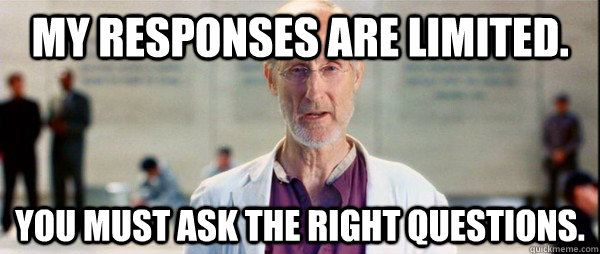These days you’d be hard pressed to find a job in media that doesn’t list “analytics” as a necessary skill. You may be in marketing, PR or content, yet you’re required to do way more than turn a creative phrase or craft a persuasive message. Now you’re expected to evaluate your efforts and prove that the things you spend your time on are contributing to the company’s success.
So each week you go into your social platforms and look at the reports. Maybe you export them and repackage them into a very professional-looking slide deck. Then you proudly present to your boss that your followers grew x% and you got y more clicks than the previous week and while video views were slightly down they’re still up over last month. Your boss, likely pleased with the positive numbers, tells you to keep up the good work.
Also on Mediabistro


This seems like a perfectly acceptable way to report on your social media performance, but it’s actually not useful at all. In order to produce social media analytics reports that will help you drive meaningful results (and really impress your boss), you need to understand the difference between social metrics and social analytics.
Here, we’re breaking it down so you can turn your social metrics into insights that will help you focus your efforts and improve your social marketing success.
What social metrics are … and aren’t
Metrics can be thought of as The What—What did this social post do for the business? How many people saw it or engaged with it?
There are a number of social analytics tools that can provide you with metrics. Each social platform has its own built-in analytics tool. The terminology used and metrics provided differs from channel to channel, but for the most part they can all fall into one of three categories:
- Reach (impressions, # of people who saw your post, # of times your brand was mentioned, # of followers)
- Engagement (likes, shares/retweets, comments/replies, clicks, video plays)
- Conversions (downloads, sign ups, sales, new followers)
Not all of these metrics are native to social platforms, but there are third-party tools, like the web analytics system you use on your site, that can fill in the holes. Regardless of where you get your metrics, it’s important to understand that these numbers are just that, numbers. They are simply data points.
They are useful for letting you know what is happening and what is changing over a period of time. These numbers and trends are fairly easy to access and it’s also quite simple to put them into a clean report with a bunch of graphs and charts that make it all feel very official.
The built-in tools on the most popular platforms, like Facebook, Twitter and LinkedIn, provide these reports out-of-the-box, which you can easily export. But, while these built-in tools are given names like “Insights” or “Analytics” they aren’t actually analytics reports or insightful at all. They are just social metrics reports. And the problem is that there isn’t much value in tracking or reporting on these numbers if you’re not going to analyze them or act on them.
From metrics to analytics
If metrics are The What, analytics is the So What? Knowing if a number is high or low, or if it went up or down since the last time you reported on it is easy. The real skill is being able to answer why. So what if more people clicked on your content than last month? So what if you got fewer likes on your tweets? Why did this happen?

The true value in collecting social media metrics is knowing what you can do with the numbers. It’s less about pulling the numbers together and more about making sense of those numbers. Figuring out how you can use them to make better decisions. This is social media analytics.
Finding the social data that matter
The first and most essential step to measuring social media success is to determine the goals of your social marketing strategy. Are you trying to drive traffic to your website? Increase brand exposure? Drive sales? If you don’t know what you’re trying to achieve, it doesn’t make sense to measure anything.
Once you know what your objective is, you’ll know what metrics matter for your goals. This is important because some of the platforms, like Facebook, give you so many data points that you can waste a lot of time examining and reporting on numbers that have nothing to do with your goals.
It is a waste of time to report on metrics that don’t support your goals. The ones that do matter are called Key Performance Indicators (KPIs). If you know what you’re trying achieve, you’ll know what KPIs to pay attention to. For example, if you’re trying to drive more people to your website, reporting on your follower growth is pointless. Your number of followers may not translate to website visitors, so you’ll want to consider if this number is necessary to track.
If you can eliminate the noise and zero in on the metrics that matter, you’ll save time and find it much easier to analyze what’s going on.
The most helpful answers start with the right questions

Now that you know what KPIs to pay attention to, you can start to ask the questions that will help you make sense of (and take action on) the data in your social metrics reports. Here are a few questions you might want to ask (and answer) when reviewing each report:
- Did my plan work?
- If it worked, why?
- If it didn’t work, why not?
- What should I do differently?
- What should I do more of?
- How can I do better?
The answers to these questions are not in the numbers. The numbers can help lead you to the right answers. But you’re going to have to put a bit of thought into it.
If your numbers went up from the previous period you need to try to answer why this happened. Did you do something differently this period vs. last period? Is there a common thread amongst the posts that did well vs. the ones that didn’t?
There’s no guarantee that you’ll answer correctly, but the answer will lead you to a plan of action and that’s what you really want out of social media analytics. There’s no sense in tracking metrics, or reporting on them if you’re not going to try to influence them with future actions.










